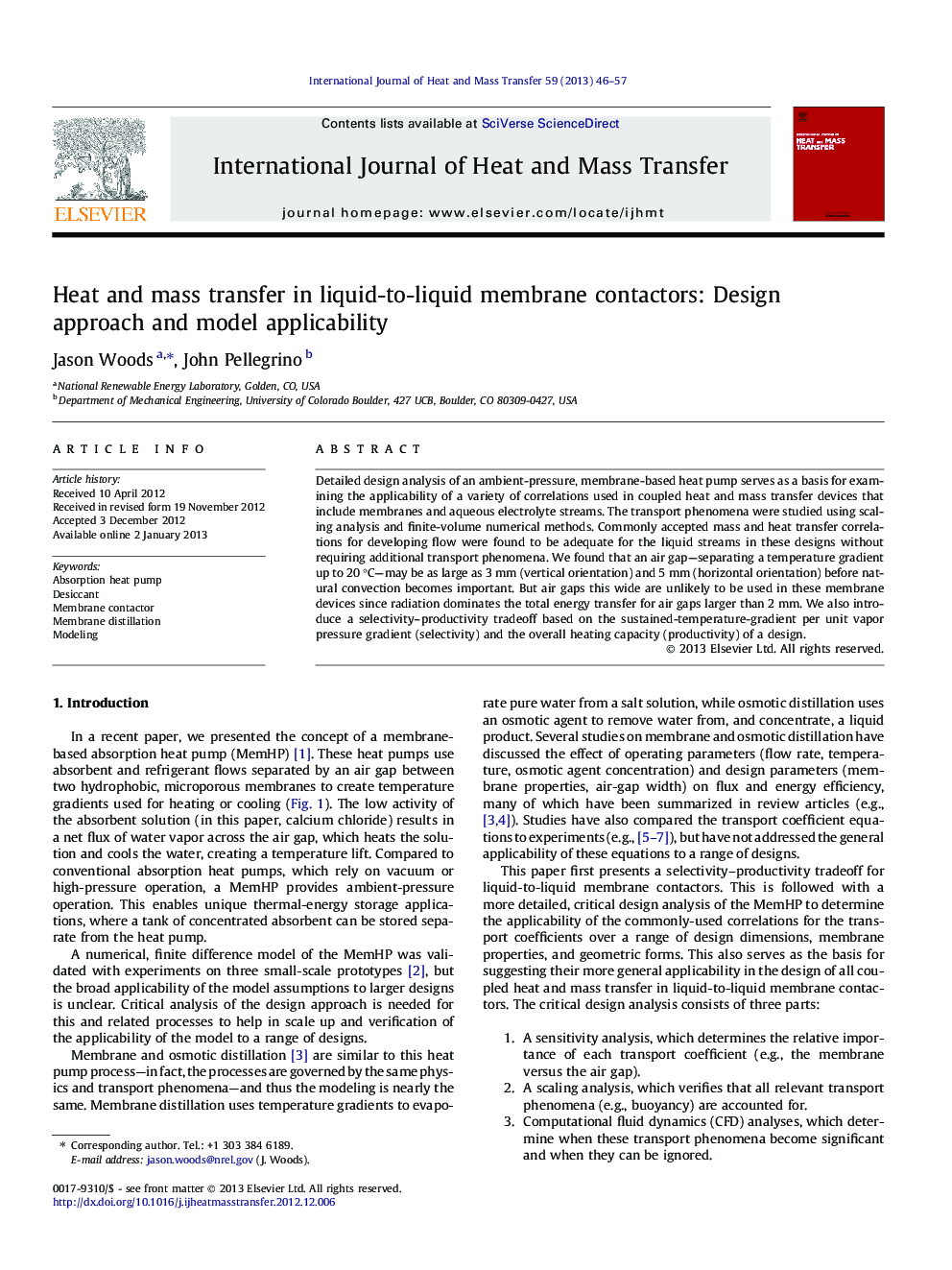| Article ID | Journal | Published Year | Pages | File Type |
|---|---|---|---|---|
| 658539 | International Journal of Heat and Mass Transfer | 2013 | 12 Pages |
Detailed design analysis of an ambient-pressure, membrane-based heat pump serves as a basis for examining the applicability of a variety of correlations used in coupled heat and mass transfer devices that include membranes and aqueous electrolyte streams. The transport phenomena were studied using scaling analysis and finite-volume numerical methods. Commonly accepted mass and heat transfer correlations for developing flow were found to be adequate for the liquid streams in these designs without requiring additional transport phenomena. We found that an air gap—separating a temperature gradient up to 20 °C—may be as large as 3 mm (vertical orientation) and 5 mm (horizontal orientation) before natural convection becomes important. But air gaps this wide are unlikely to be used in these membrane devices since radiation dominates the total energy transfer for air gaps larger than 2 mm. We also introduce a selectivity–productivity tradeoff based on the sustained-temperature-gradient per unit vapor pressure gradient (selectivity) and the overall heating capacity (productivity) of a design.
► We investigated the transport phenomena in membrane heat and mass transfer devices. ► We used sensitivity, scaling, and CFD analyses to investigate these phenomena. ► Radiation across an air gap, as in air gap membrane distillation, cannot be ignored. ► In most cases, the membrane diffusivity is important; its thermal conductivity is not. ► For larger channels, buoyancy can affect highly-concentrated salt solution flows.
